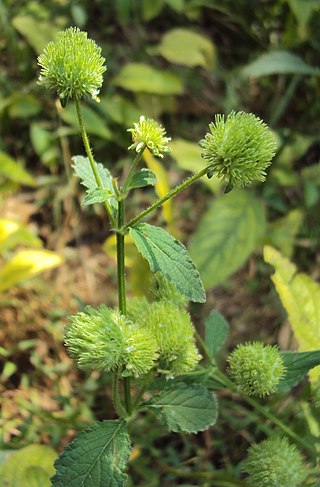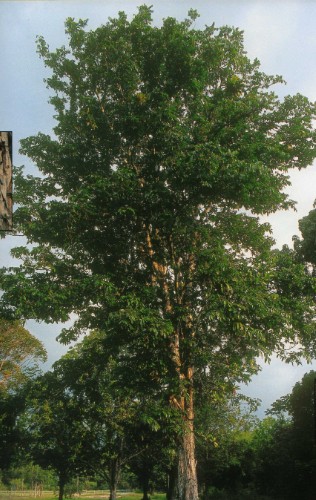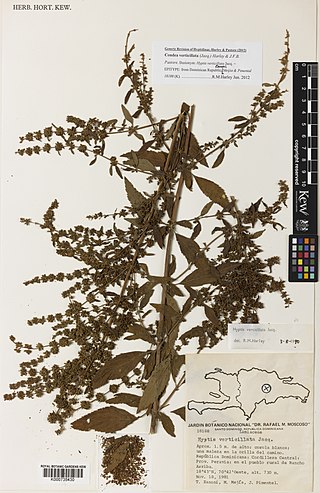
The Lamiaceae or Labiatae are a family of flowering plants commonly known as the mint, deadnettle or sage family. Many of the plants are aromatic in all parts and include widely used culinary herbs like basil, mint, rosemary, sage, savory, marjoram, oregano, hyssop, thyme, lavender, and perilla, as well as other medicinal herbs such as catnip, salvia, bee balm, wild dagga, and oriental motherwort. Some species are shrubs, trees, or, rarely, vines. Many members of the family are widely cultivated, not only for their aromatic qualities, but also their ease of cultivation, since they are readily propagated by stem cuttings. Besides those grown for their edible leaves, some are grown for decorative foliage. Others are grown for seed, such as Salvia hispanica (chia), or for their edible tubers, such as Plectranthus edulis, Plectranthus esculentus, Plectranthus rotundifolius, and Stachys affinis. Many are also grown ornamentally, notably coleus, Plectranthus, and many Salvia species and hybrids.
Mesosphaerum argutifolium is a species of flowering plant in the family Lamiaceae, formerly known as Hyptis argutifolia. It is found only in Ecuador. Its natural habitat is subtropical or tropical moist montane forests.

Hyptis is a genus of flowering plant in the family Lamiaceae. These plants, known commonly as bushmints, are widespread in tropical North and South America, as well as parts of West Africa. There are 150 species, which may be annual or perennial herb to shrub. Recently, several genera were segregated from Hyptis.
Mesosphaerum diversifolium is a species of flowering plant in the family Lamiaceae, formerly known as Hyptis diversifolia. Its natural habitat is subtropical or tropical moist montane forests only in Ecuador.
Hyptis florida is a species of flowering plant in the family Lamiaceae. It is found only in Ecuador. Its natural habitat is subtropical or tropical moist lowland forests.
Mesosphaerum pseudoglaucum is a species of flowering plant in the family Lamiaceae, formerly known as Hyptis pseudoglauca. It is found only in Ecuador. Its natural habitat is subtropical or tropical moist montane forests.

Condea emoryi, the desert lavender, is a large, multi-stemmed shrub species of flowering plant in Lamiaceae, the mint family.

Hyptis alata, the musky mint or clustered bushmint, is a shrub species of flowering plant in the Lamiaceae, the mint family. The genus Hyptis is commonly known as the bushmints. It is a native species throughout the southeastern United States from Texas to North Carolina, as well as in Cuba, Argentina, southern Brazil, and Paraguay. It is found in wetlands, prairies, pond margins and wet flatwoods. Hyptis alata is the southeastern United States analog to the Southwestern deserts H. emoryi, the desert lavender.USDA: NRCS: Plants Profile Hyptis alata
- Hyptis alata subsp. alata - United States and Cuba
- Hyptis alata subsp. rugosula(Briq.) Harley - South America
Lintneria justiciae is a moth of the family Sphingidae. It is known from south-eastern Brazil, eastern Argentina and Uruguay.

Mesosphaerum suaveolens, synonym Hyptis suaveolens, the pignut or chan, is a branching pseudocereal plant native to tropical regions of Mexico, Central, the West Indies, and South America, as well as being naturalized in tropical parts of Africa, Asia and Australia. It is generally 1–1.5 m (3.3–4.9 ft) tall, occasionally up to 3 m (9.8 ft). Stems are hairy, and square in cross section. Leaves are oppositely arranged, 2–10 cm (0.79–3.94 in) long, with shallowly toothed margins, and emit a strong minty odor if crushed. Flowers are pink or purple, arranged in clusters of 1–5 in the upper leaf axils.

Brazilian tea culture has its origins in the infused beverages, or chás, made by the indigenous cultures of the Amazon region and the Rio da Prata basin. It has evolved since the Portuguese colonial period to include imported varieties and tea-drinking customs. There is a popular belief in Brazil that Brazilians, especially the urban ones, have a greater taste for using sugar in teas than in other cultures, being unused to unsweetened drinks.

Orphanostigma abruptalis is a moth of the family Crambidae. The species was first described by Francis Walker in 1859. It occurs in the tropics of the Old World from Africa to Australia.

Pyrausta phoenicealis, the perilla leaf moth, is a moth of the family Crambidae described by Jacob Hübner in 1818. It is found worldwide, including the Americas, Africa, Australia and Asia.

Hyptis capitata, also known as false ironwort or knobweed, is a species of erect annual shrubs, of the plant family Lamiaceae. It is native to Florida, Mexico, Central America, the West Indies, and South America but naturalized in Australia, Southeast Asia, and some tropical islands. The plants grow up to a height of 1.5 meters. Crushed leaves are applied to cuts. It is considered a weed in many places.

Carapa guianensis is a species of tree in the family Meliaceae, also known by the common names andiroba or crabwood.

Hyptis brevipes is a species of flowering plant in the genus Hyptis. These plants known commonly as lesser roundweed, nanto-iganigakusa (Taiwan), genggeyan and kaneja (Indonesia), sawi hutan (Malaysia), ortela-brava and fazendeiro (Brazil). Hyptis brevipes is an erect annual plant up to 1 m high with the typical square stem of a labiate, often densely hairy but sometimes less so. Leaves are also normally coarsely hairy on both surfaces, opposite, narrowly ovate or lanceolate, 5–7 cm long, up to 2 cm wide, cuneate at the base, the margins irregularly serrate. The inflorescence is a dense raceme, almost globose, up to 14 mm diameter, on a peduncle about 1 cm long in the axils of most upper leaves. Corolla or petals are white, irregularly five-lobed, and about 5 mm long. The calyx, 4 mm long, also has five narrow, finely barbed lobes. Seeds are ovoid, up to 1 mm long, dark brown to black, obscurely striate, with a conspicuous scar.

Nepetoideae is a subfamily of plants in the family Lamiaceae.

Condea verticillata, commonly known as John Charles, is a species of flowering plant in the family Lamiaceae. It is found in Mexico, Florida, Central America, the Caribbean, and northwestern South America. It has also been introduced to Hawaii.












